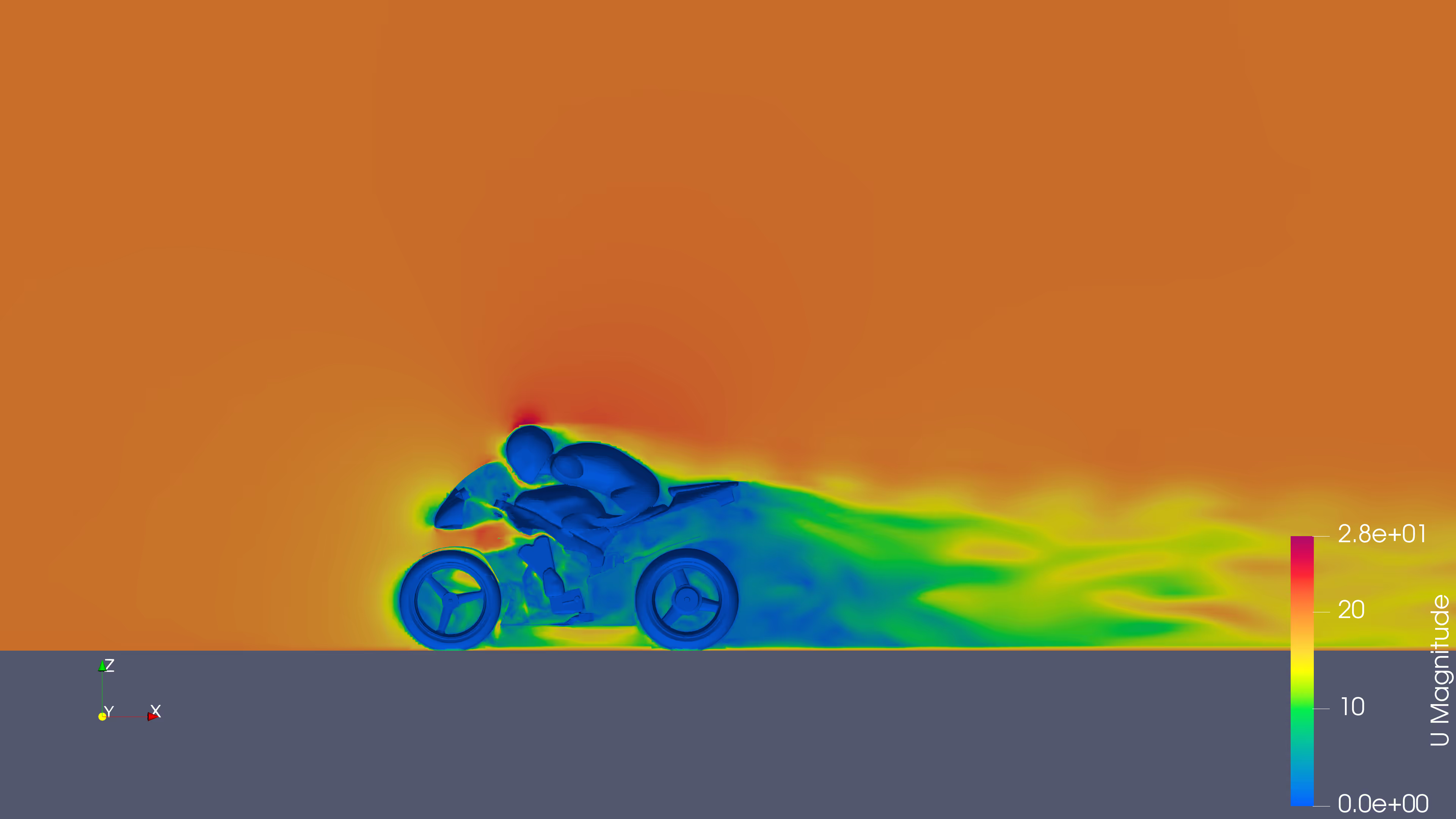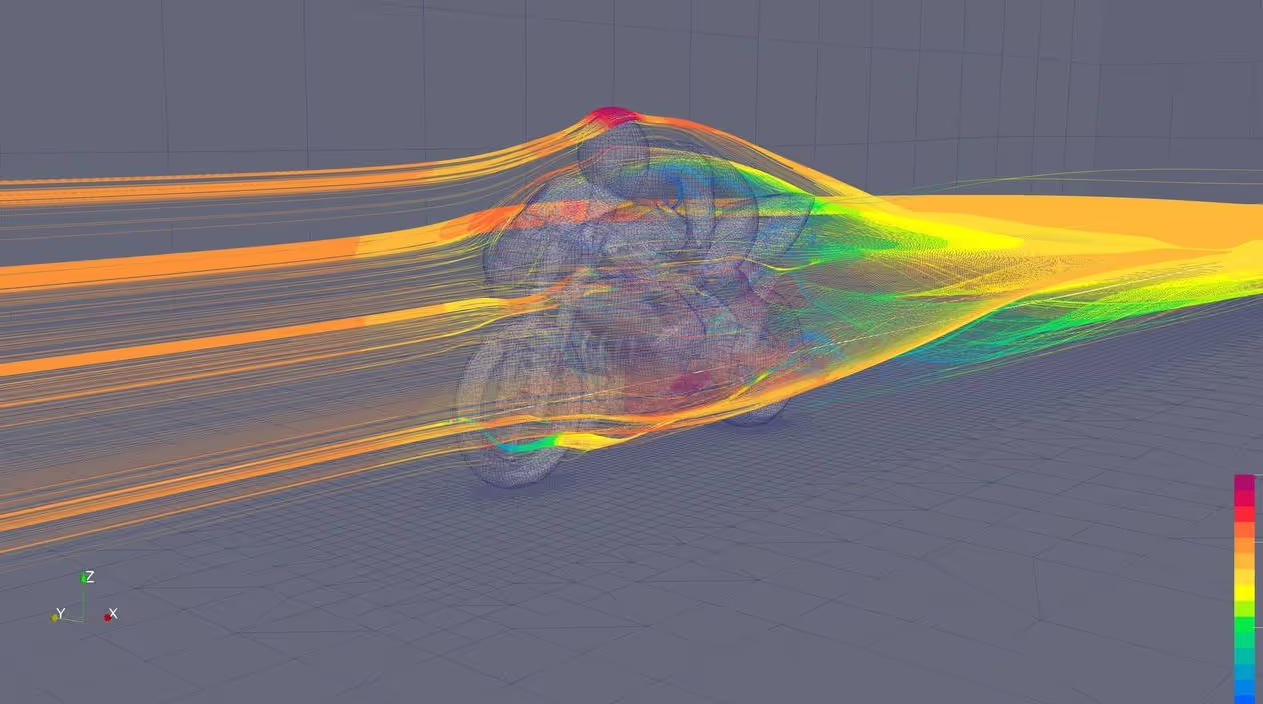
As the maritime industry explores ammonia as a cleaner fuel alternative, understanding how it behaves during bunkering is becoming increasingly important, especially from a safety and operational standpoint. Factors like wind, temperature, humidity, and atmospheric turbulence can influence how ammonia behaves once released, yet many existing models do not capture this complexity. My research aims to close that gap using CFD simulations, with the goal of improving how ammonia dispersion is predicted and managed in practical scenarios.
The complexity of turbulence modelling, mesh generation, solver selection, and interpreting results from large-scale simulations was both daunting and fascinating. One early challenge was learning how to set up and validate large-scale dispersion simulations, especially using Large Eddy Simulation (LES) for high-fidelity output. The visual below show some such LES simulation of airflow over a motorcycle, which helped build my understanding of flow structures and wake behaviour.

As experience with OpenFOAM developed, attention was gradually directed toward more complex viscous, multiphase scenarios—one example being the glycerol tank filling simulation shown below.

In this case, challenges were encountered in capturing fluid interfaces, managing high viscosity, and maintaining numerical stability under the influence of hydrostatic forces. Unlike earlier turbulence-focused simulations, this slower, surface-driven flow revealed a different layer of complexity within CFD modelling.
Training in OpenFOAM is currently underway, and I’m looking forward to exploring the more advanced techniques and capabilities this powerful CFD tool has to offer.
We will continue to provide update on Jun Hao's progress with this important project. If you would like to contact Jun Hao to hear more about his work in this field, feel free to drop him a line at jh.liew@solis-marine.com
You can also read more about the complex analysis that our Engineering team conduct for a wide range of clean shipping and marine renewables projects here.